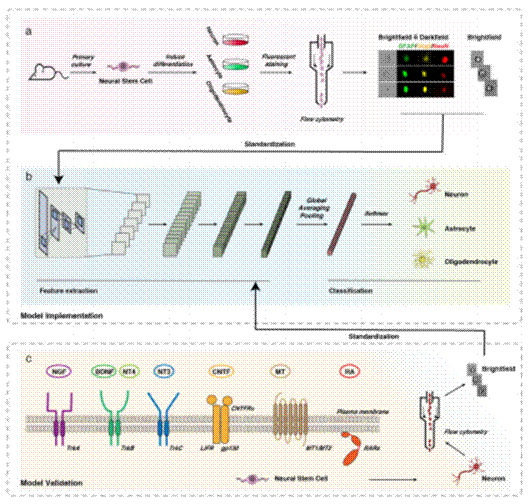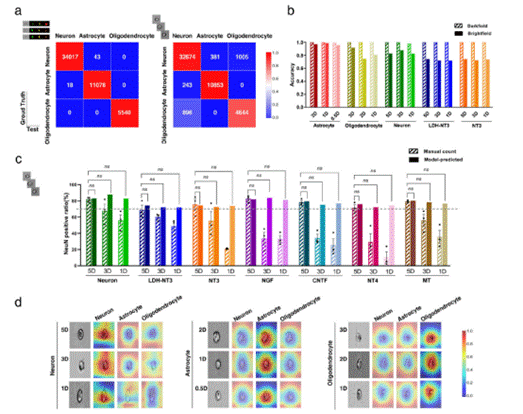On May 10th, Prof. CHENG Liming and Prof. ZHU Rongrong, from the Laboratory of Spinal Cord Injury Regeneration and Repair,which is the key laboratory of the Ministry of Education, Tongji Hospital Affiliated to Tongji University, published a paper online titled "Deep learning-based predictive identification of neural stem cell differentiation" in Nature Communications. (Editors’ Highlights in ‘Stem cells’ area,https://www.nature.com/collections/pkgztbmgly)


The differentiation of neural stem cells (NSCs) into neurons is proposed to be critical in devising potential cell-based therapeutic strategies for central nervous system (CNS) diseases, however, the determination and prediction of differentiation is complex and not yet clearly established, especially at the early stage. The research hypothesizes that deep learning could extract minutiae from large-scale datasets, and present a deep neural network model for predictable reliable identification of NSCs fate. Remarkably, using only bright field images without artificial labelling, our model is surprisingly effective at identifying the differentiated cell types, even as early as 1 day of culture. Moreover, they approach showcases superior precision and robustness in designed independent test scenarios involving various inducers, including neurotrophins, hormones, small molecule compounds and even nanoparticles, suggesting excellent generalizability and applicability.


ZHU Yanjing from Affiliated Tongji Hospital and HUANG Ruiqi, PhD of School of Medicine, are co-first authors of the paper. Prof. CHENG Liming and Prof. ZHU Rongrong are co-corresponding authors. The research provides an advanced tool for the identification of NSC fate; this model has the key features of high precision, a low false positive rate, speed, wide applicability, simple operation and cost-effectiveness. This could be a convenient and well-suited method to investigate the unknown effects of substances on NSCs and rapidly predict potential therapeutic molecules and drugs to promote neural regeneration in CNS diseases.
